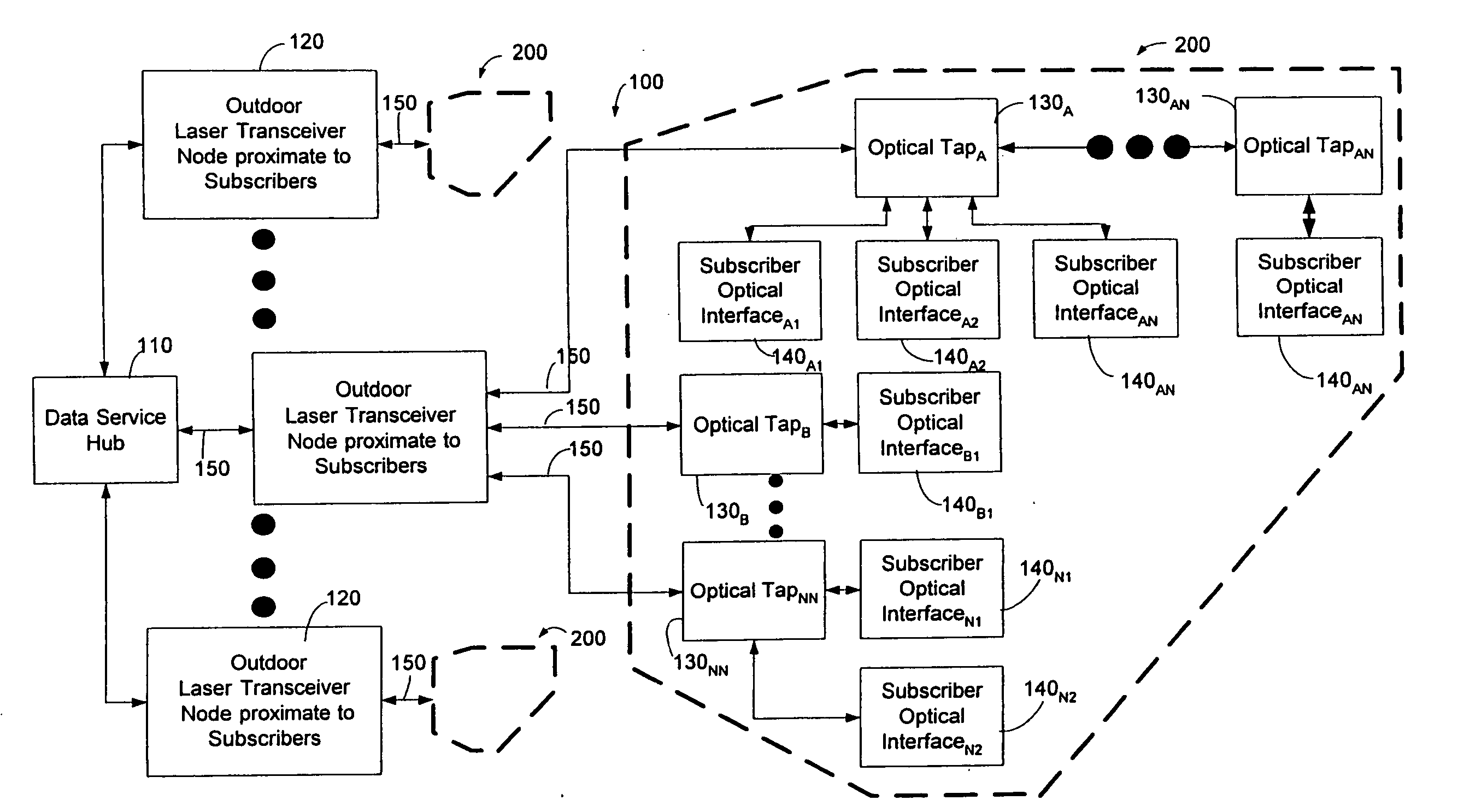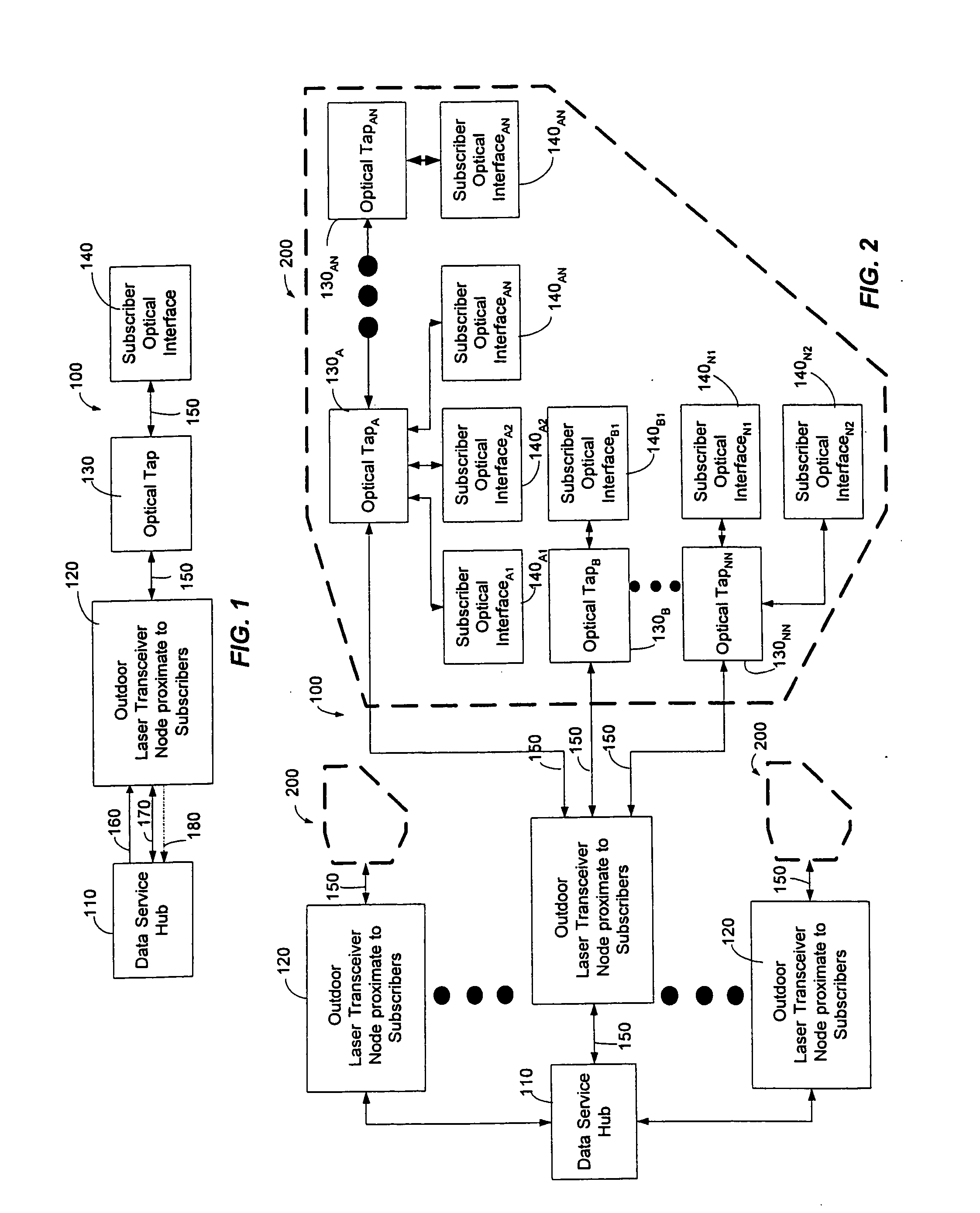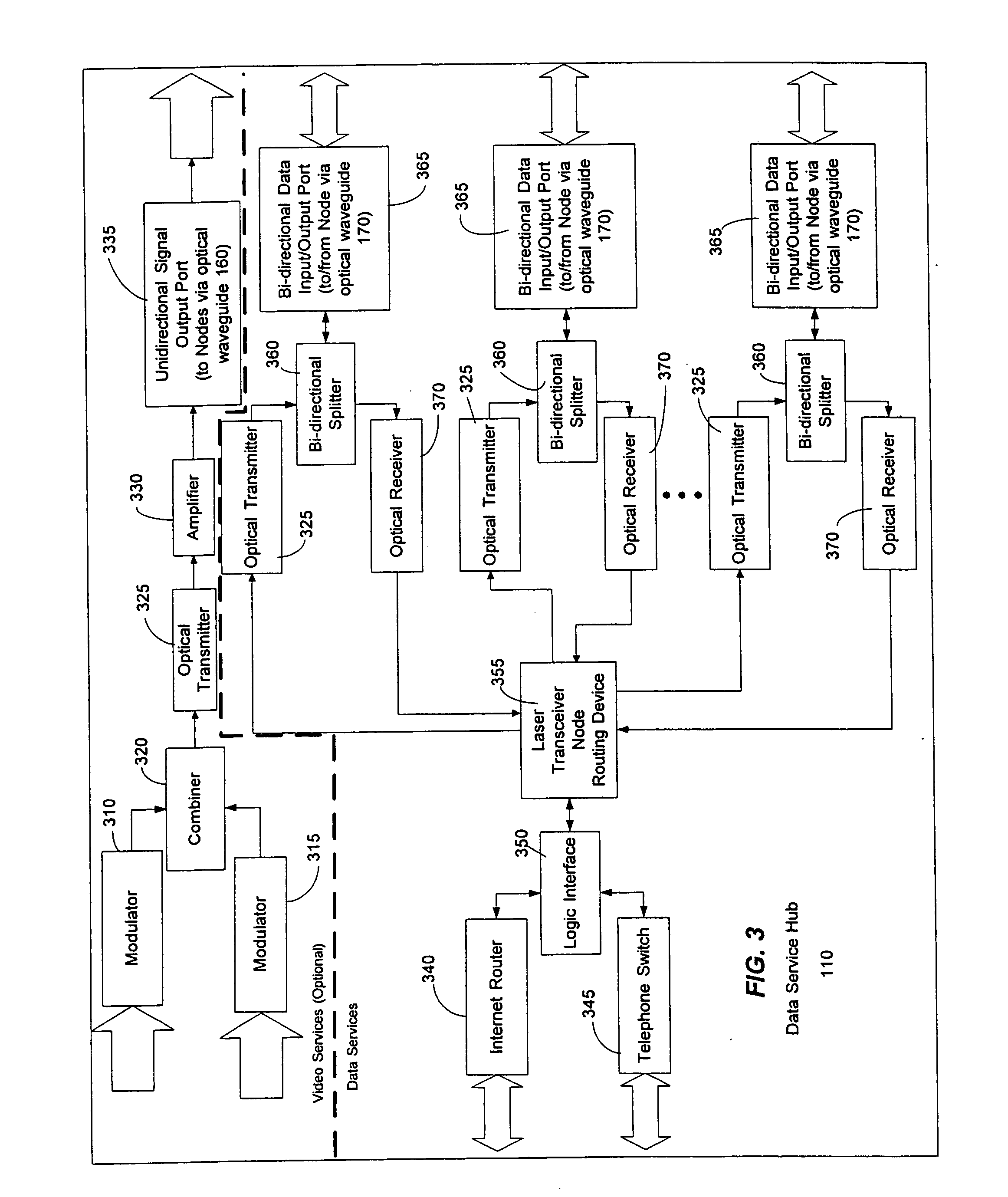System and method for communicating optical signals between a data service provider and subscribers
- Summary
- Abstract
- Description
- Claims
- Application Information
AI Technical Summary
Benefits of technology
Problems solved by technology
Method used
Image
Examples
Embodiment Construction
[0049] The present invention may be embodied in hardware or software or a combination thereof disposed within an optical network. The present invention can comprise a laser transceiver node disposed between a data service hub and a subscriber that can allocate additional or reduced bandwidth based upon the demand of one or more subscribers. The present invention can support one gigabit or faster Ethernet communications in optical form to and from the data service hub and partition or apportion this optical bandwidth into distribution groups of a predetermined number. The present invention allows bandwidth to be offered to subscribers in preassigned increments. The flexibility and diversity of the present invention can be attributed to a few components.
[0050] The laser transceiver node of the present invention can comprise an optical tap routing device that is coupled to one or more tap multiplexers. The optical tap routing device can assign multiple subscribers to a single port tha...
PUM
 Login to View More
Login to View More Abstract
Description
Claims
Application Information
 Login to View More
Login to View More - R&D
- Intellectual Property
- Life Sciences
- Materials
- Tech Scout
- Unparalleled Data Quality
- Higher Quality Content
- 60% Fewer Hallucinations
Browse by: Latest US Patents, China's latest patents, Technical Efficacy Thesaurus, Application Domain, Technology Topic, Popular Technical Reports.
© 2025 PatSnap. All rights reserved.Legal|Privacy policy|Modern Slavery Act Transparency Statement|Sitemap|About US| Contact US: help@patsnap.com



